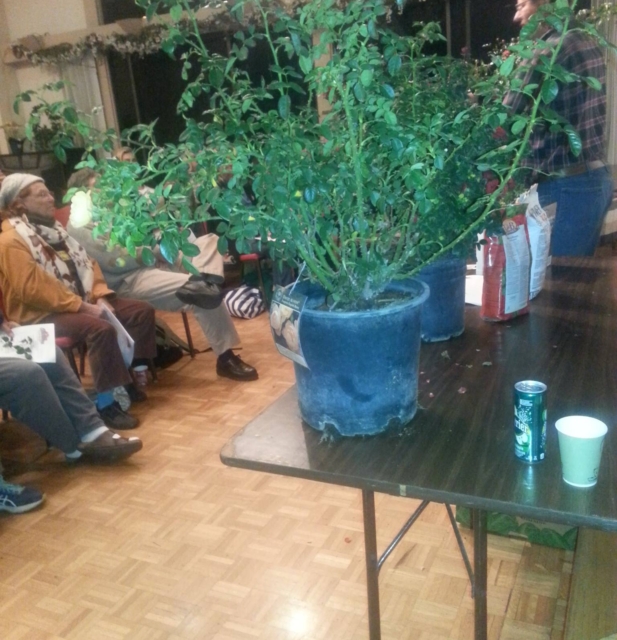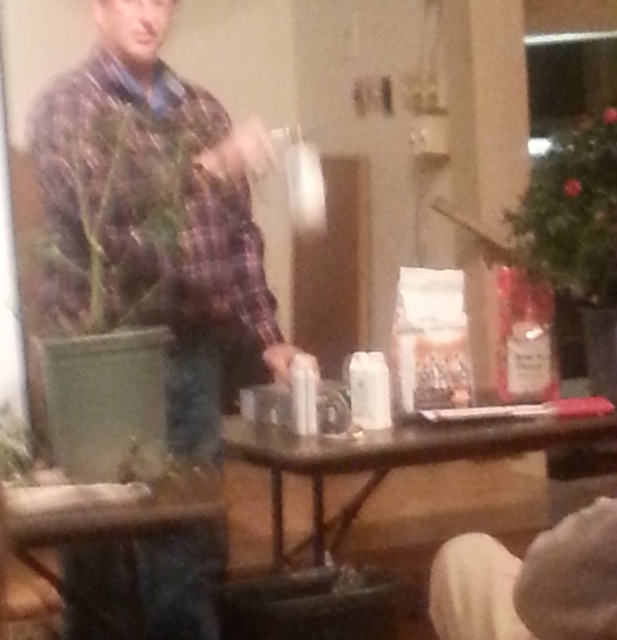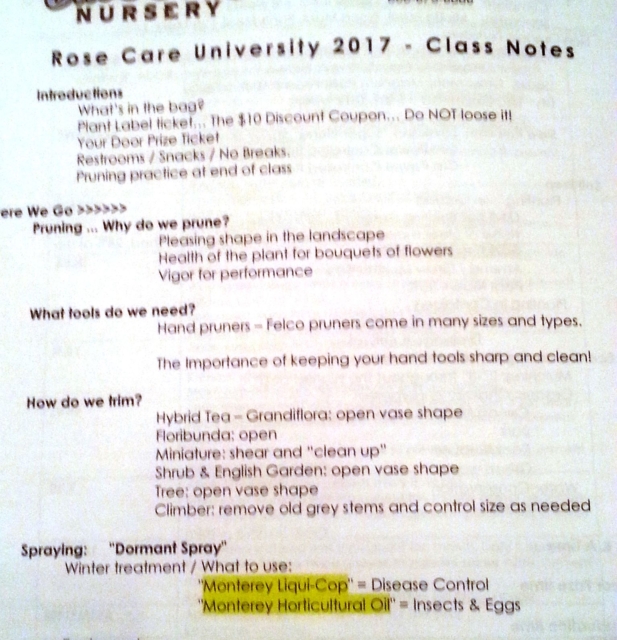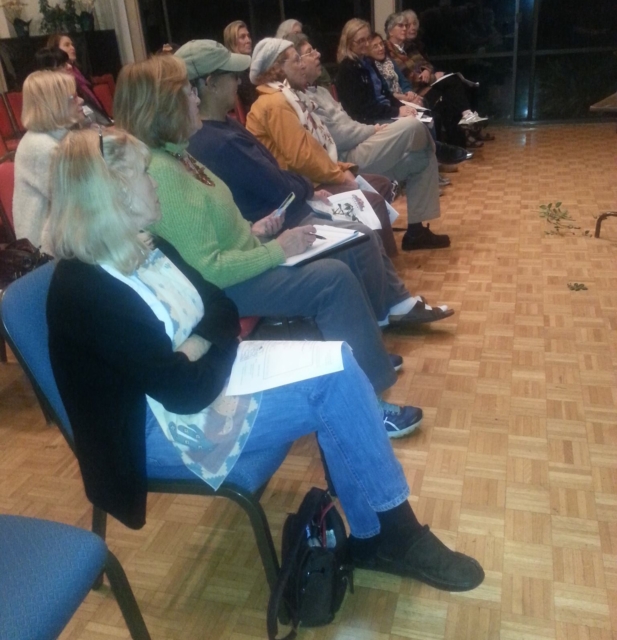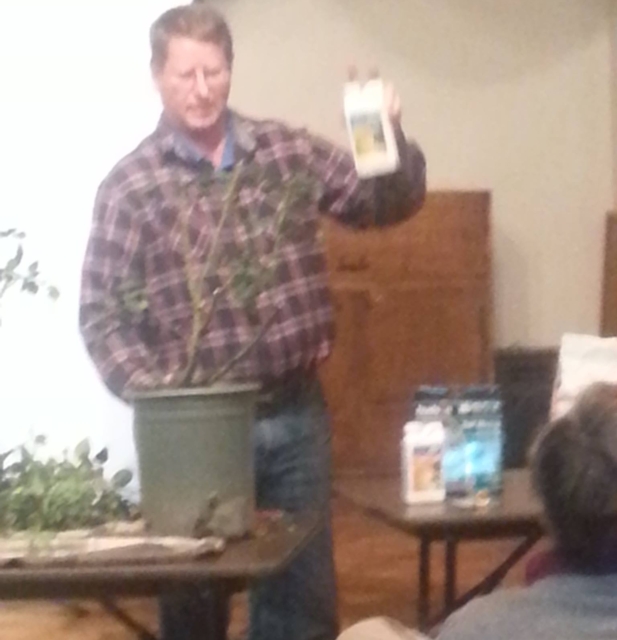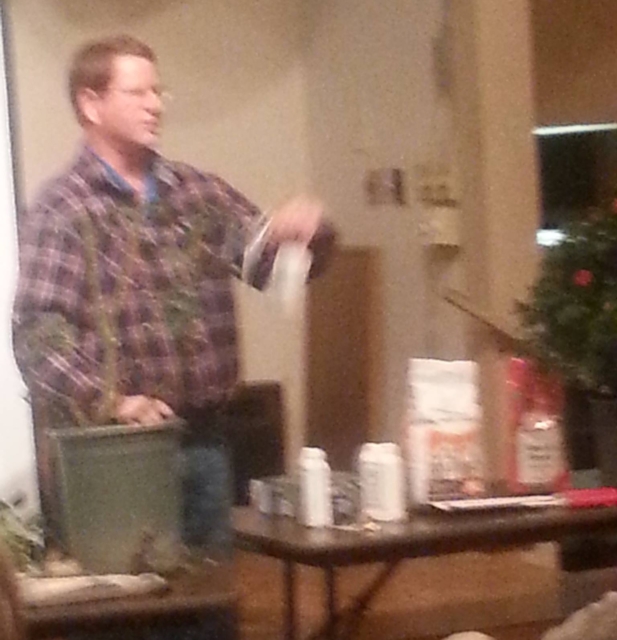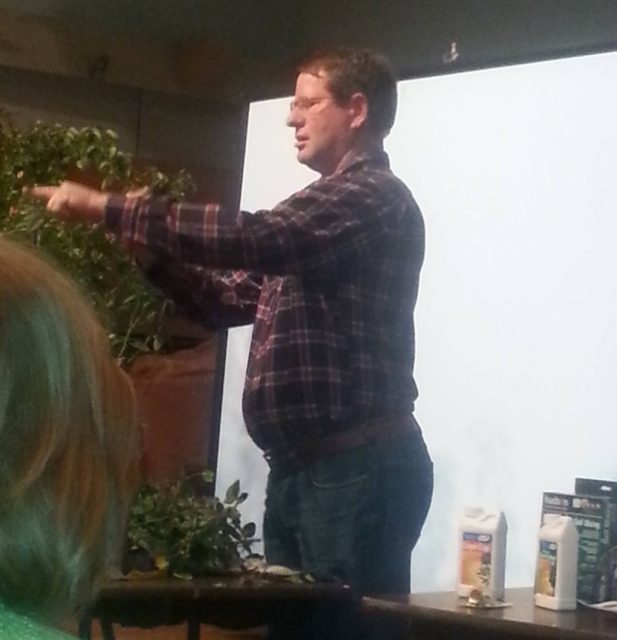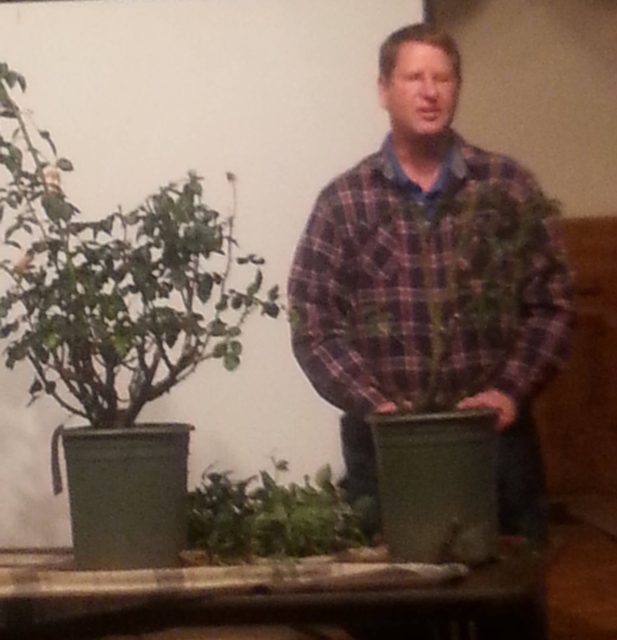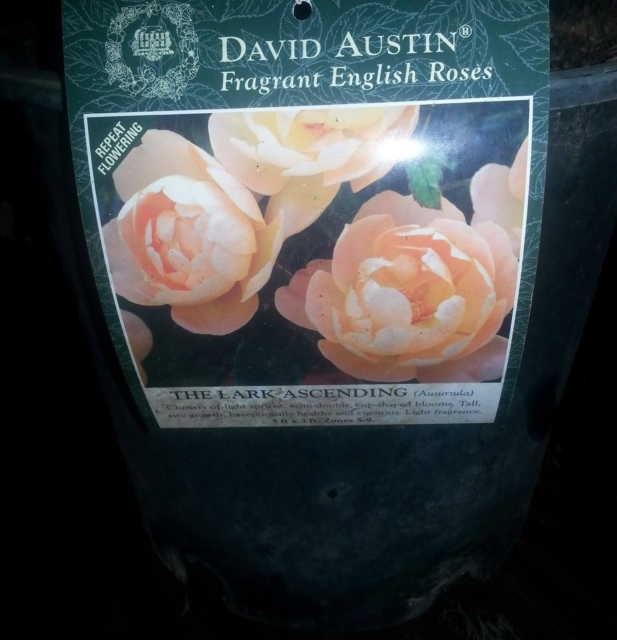Date/Time
Wednesday, January 4, 2017
12:00 am
Add Reminder to Calendar: iCal Google Calendar
Location
Point Dume Club House
29500 Heathercliff Drive
Malibu, California
Tags: 2017, Meeting, roses, Scott Klittich, Season 2016-2017
For our January event, Scott Klittich discussed Trimming Your Roses for Bountiful Bouquets. Scott’s talk was a condensed version of his rose pruning class. Learn what to prune, where, when and why.
Scott Klittich, owner and manager of the renown 22 acre Otto and Sons Rose Nursery in Fillmore shared the following tips on “Trimming Your Roses for more Bountiful Bouquets.”
January is, of course, the ideal time to prune your roses. But if you wait a few more weeks that’s fine. Your roses will bloom six to eight weeks from the time you trim them. Why is it important to prune? It promotes the vigor of your plants, it opens up the plant for air circulation, and it enhances the production of more abundant blooms.
Scott noted that the way you trim your roses depends on the type of rose you are pruning. For example, when trimming Hybrid Teas, Grandifloras, Floribundas, English roses, and Tree roses, you need to create an “open vase” shape. For Miniature roses, you shear the tops lightly and simply clean out the dead branches, while for Climbers you only remove the old grey stems and control the size as needed for your space.
Basically there are three main steps to follow. First thing, on a mature rose, you cut it down by 50%. For smaller plants, you cut it down by 30%. The second step involves the removal of dead branches and branches that are crossing. The aim is to create an “open vase” shape leaving an odd number of canes. Then, the third step is to look for the buds and prune each of the remaining canes just above the bud with a slanted cut. How you make the cut will determine which direction the new branch will grow.
Yes, there is a rule to cut any branch that is smaller in width than a pencil, but if you want the plant to fill out in a certain direction where the thinner branch is growing then leave it to grow. What is important is to know when to stop pruning! Also, clean cuts are critical. Always keep your pruning shears clean and sharp.
Some rose growers advocate removing all the leaves at this point, but according to Scott, this is not a necessary step. As the plant grows the old leaves will drop off. What is crucial is to apply a “dormant spray” right after you prune with a tank sprayer or a hose-end sprayer. Scott recommended using Monterey Liqui-Cop for disease control and Monterey Horticultural Oil to inhibit insects and eggs forming on the roses. You can either mix the two together or spray them separately.
Watering your roses is different for every garden. Water well and then wait until you see the little tips droop. At that point, you will be two days too late but you will know now when to adjust your watering schedule.
Fertilize at least twice a year, in February and in October. Note that organic fertilizers work only when the weather is warm. If you wish to go organic, he recommends G&B Rose and Flower fertilizer. You can also add Alfalfa meal, blood meal, bone meal, fishmeal, and kelp. For his own roses, Scott uses Gro Power Plus, a non-organic fertilizer.
Another tip is to use a “high-pressure nozzle” in the morning to wash off any spores on your roses. And always lay down a two to three-inch layer of mulch for water conservation and pest control, keeping two inches away from the stem.
Scott invited us to attend Rose Days at the Nursery, which this year will be held April 21-23rd. Check out his website for additional information: ottoandsons-nursery.com.

